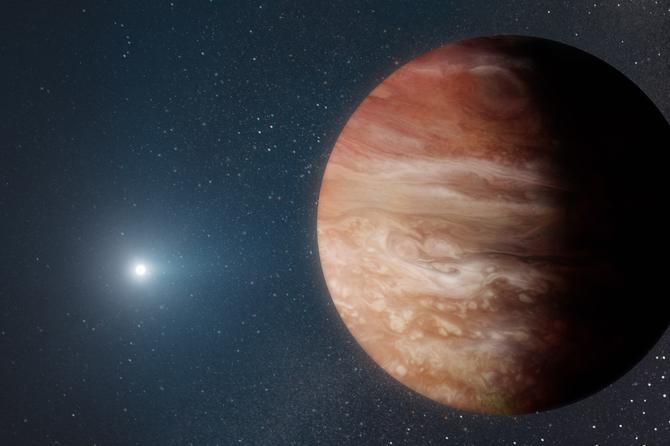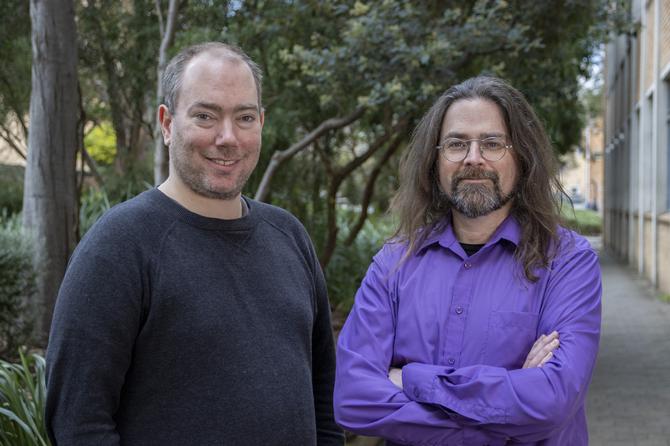Astronomers have discovered a planetary system about 6,500 light-years away towards the centre of the Milky Way that provides the clearest insight yet into the fate of our solar system.
About five billion years from now, Jupiter is expected to survive the evolution of our Sun into a white dwarf while Earth will likely be destroyed during its intermediary red giant phase.
The international research team discovered a gas giant planet similar to Jupiter, named MOA-2010-BLG-477-Lb, using the world’s largest and most powerful optical telescopes at the W.M. Keck Observatory in Hawaii.
Their observations, published today in the journal Nature, represent the first confirmed planetary system orbiting a white dwarf star that mirrors the expected fate of our solar system.
University of Tasmania postdoctoral researcher and lead author Dr Joshua Blackman said the findings marked a significant step forward in our understanding of how planets evolve.
Our observations confirm that planets orbiting far enough from their host star can survive the death of their Sun. It’s a glimpse into the fate of Jupiter in billions of years when our Sun becomes a white dwarf.
“There are only a handful of
other planets that have been found orbiting white dwarfs, and this system
provides an important data point that will inform theoretical models of how
planetary systems evolve.”

An artist’s impression of the newly discovered gas giant planet orbiting a white dwarf, or dead star (Credit: W. M. Keck Observatory/Adam Makarenko)
More than 4,500 planets have been discovered outside of our solar system and most of these orbit main sequence stars like our Sun.
Eventually, in about five billion
years, these stars will run out of hydrogen fuel to burn and become very dense,
dead stars called white dwarfs.
These stars are about half the
mass of the Sun, but about the size of Earth, and have a gravitational force so
strong that a normal person would weigh more than a hundred thousand times more
than they do on Earth.
“The planet is about
one-and-a-half times the size of Jupiter and orbits at a separation of about
450 million kilometres – three times the distance between the Earth and the
Sun,” Dr Blackman said.
“Unless we manage to colonise
other planets or moons further from the Sun, humankind will likely be long gone
by the time this Jupiter planet settles in orbit around its dying host.”
The newly discovered planetary system is about a quarter of the way towards the centre of the Milky Way, well outside the Solar neighbourhood where exoplanets are most often discovered.
Associate Professor Andrew Cole said the initial detection used data from the University of Tasmania’s one-metre optical telescope at Canopus Hill, outside Hobart.
We used a technique called gravitational microlensing to detect planets around other stars, which involves the chance alignment of two stars. The gravity of the closer stars amplifies the light from the distant star as they move past one another.

Dr Joshua Blackman and Associate Professor Andrew Cole (Credit: Peter W. Allen)
“This research is beneficial to the study of theories of planetary evolution and the relatively new field of planetary systems around white dwarfs.
“Studies like this one and the techniques used will lead directly into planned surveys with the upcoming NASA mission, the Nancy Grace Roman Telescope.”
The international collaboration involved Warren Chair in Astronomy Professor Jean-Philippe Beaulieu and PhD student Katie Vandorou from the University of Tasmania, Australia; and researchers from the University of Maryland/NASA, US; Institut d’Astrophysique de Paris, France; and Instituto de Astrofísica de Andalucía, Spain.
